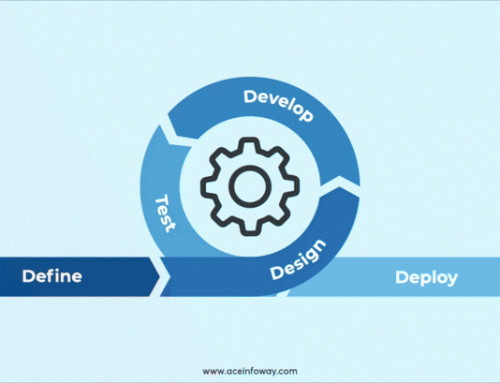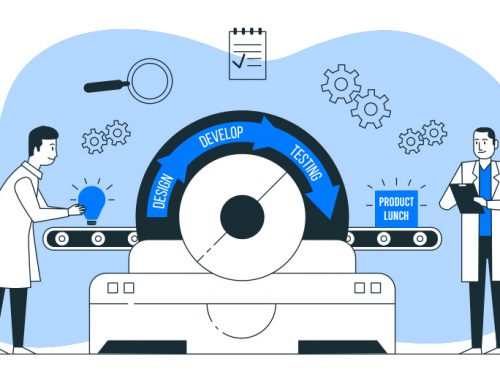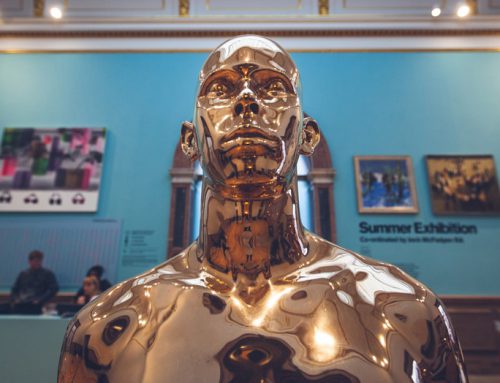Table of Contents
“Artificial intelligence will digitally disrupt all industries. Don’t be left behind.” – Dave Waters
From the inception of AI, image processing to be incorporated in smart systems is a perennial project for people working on it. In its initial phase, it required a lot of manual input, providing instructions to computers, to get some output. These machines,or known as Expert Systems, were trained to recognize images.
According to Gartner, the total number of AI adopters across different industries has increased by 270% over the last 4 years.
We want the machines to do more than just recognize images. With the advancement in Artificial Intelligence, it has helped engineers to design software that can impersonate the human capacity to observe, understand, recognize and describe the photo and video content
with great accuracy.
What is Image processing?
In general terms, manipulating an image to amplify the same to generate information out of it is called image processing. There are 2 methods of image processing:
- – Analog image processing, which is used for processing photographs, printouts, and other image hard copies.
- – Digital image processing, which is used for manipulating digital images with the help of complex algorithms
Main Purpose of Image Processing
- – Representing processed data in a visual way one can understand, for instance, giving a visual form to invisible objects.
- – To improve the processed image quality, image sharpening and restoration works well.
- – Image convalescence helps in searching images.
- – Helps to measure objects in the image.
- – With pattern recognition, it becomes easy to classify objects in the image, locate their position and get an overall understanding of the scene.
Image Processing Phases
There are 8 phases for image processing which goes step-wise:
-
Image acquisition:
Captures the image with a sensor and converts it into a manageable entity
-
Image enhancement
The input image quality is improved and also extracts details hidden in it
-
Image restoration
Any possible corruption like blur, noise, or camera misfocus is removed to get a cleaner vision on probabilistic and mathematical model basis
-
Color image processing
The colored images and varied color spaces are processed with pseudocolor or RGB processing way.
-
Image compression and decompression
This allows for changes in image resolution and size, be it for reduction or restoring images depending on the need.
-
Morphological processing
Defines the object structure and shape in the image.
-
Image recognition
For a particular object, the specific features are identified in the image and techniques like object detection are used for the same.
-
Representation and description
is all about visualizing the processed data.
It is not easy to accomplish processing massive amounts of data manually. Here’s where Artificial Intelligence and machine learning algorithms become very helpful. The use of ML and AI to boost the data processing speed and generate quality image result. But of course, in order to get high-quality results, you need to pick the right tools and methods.
Image processing methods, techniques, and tools
The images captured with regular sensors need preprocessing as some could contain too much noise or are misfocused. There are two detection techniques to be used for processing digital images as well as for preprocessing.
-
Filtering
Used to modify and enhance the input image. With various filters available, certain features in the image can be emphasized or removed, can also reduce the image noise and so on.
-
Edge detection
Used for data extraction and image segmentation, to find meaningful object edges in the images that are preprocessed.
To make things easier, there are specific libraries and frameworks that can be used to implement image processing functionalities.
Open-source libraries for AI-based image processing
Computer vision libraries contain common image processing functions and algorithms. Several open-source libraries are available that can be used to develop image processing and computer vision features.
OpenCV
The Open Source Computer Vision Library (OpenCV) is a popular computer vision library that provides ample algorithms and functions that support the algorithms. It includes various modules like, image processing module, object detection module, and machine learning module to name some. This library can be used to perform image processing tasks like image acquisition, compression, enhancement, restoration, and data extraction.
VXL
The VXL library is a set of libraries for computer vision and implements a number of popular computer vision technology algorithms and related functionalities.
AForge.NET
AForge.NET, a computer vision library with multiple libraries that can be used for image processing and computer vision to neural networks and fuzzy computations. Additionally, AForge.NET provides help files and a set of sample applications demonstrating how to use this framework.
LTI-Lib
LTI-Lib library makes it easier to share and maintain code while still providing fast algorithms for real-world applications.
It provides a wide range of features that can be used for solving mathematical problems, a set of classification tools, and multiple image processing and computer vision algorithms.
Conclusion
With AI algorithms, machines can be taught to interpret images for a particular task based on the requirement. There are immense opportunities to implement AI based image processing in every industry. It depends on how you want to make the most out of it.
Ace Infoway is curious about AI and machine learning and are aware of the latest improvements in AI-powered image processing. We learn and implement them in our AI projects effortlessly. We’d be happy to assist you in implementing image processing functionality in your current web application or building a custom AI-based solution from scratch.

























Leave A Comment